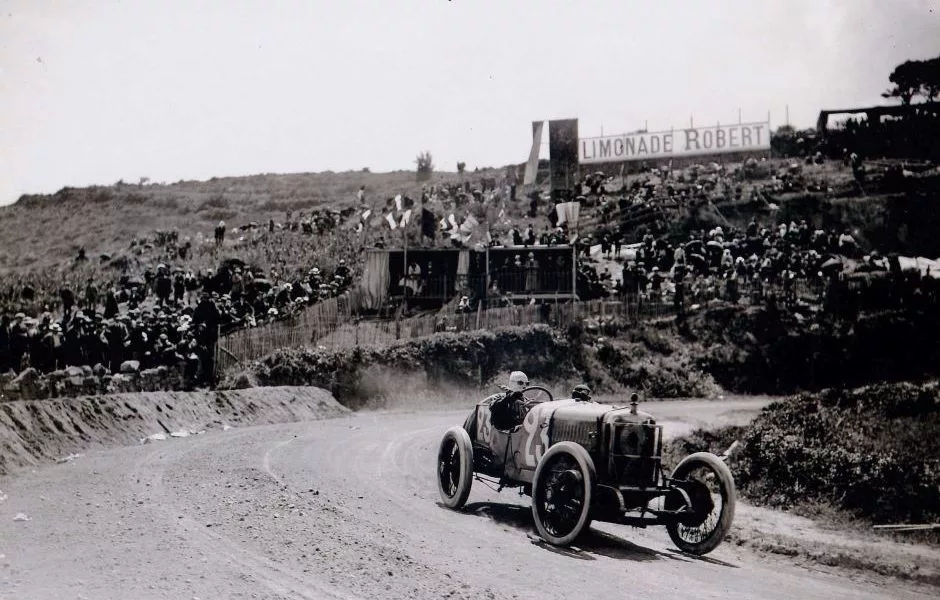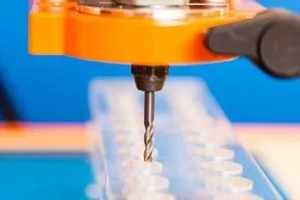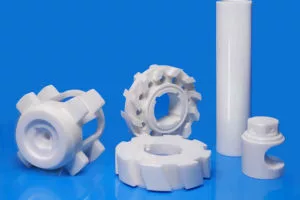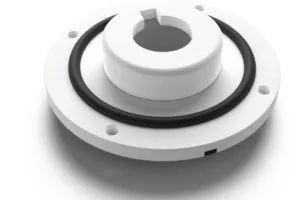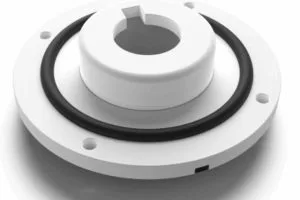In 2014, Australian automotive restorer Philip Guilfoyle found himself in quite a unique situation. Approached by the owner of the last remaining Delage Type-S race-car from 1914, he was commissioned to restore the one-of-a-kind vintage vehicle, which was at risk of becoming a relic in the canon of historic cars.
Guilfoyle’s project is today recognized as an important milestone in automotive restoration, as it marked one of the first very times that new technologies such as 3D scanning and 3D printing were successfully employed to bring a vintage car back to functioning status. Since then, many automotive companies, enthusiasts and manufacturing services have relied on digital manufacturing technologies to restore vintage cars to mint condition.
The last Delage Type-S
If you aren’t familiar with century-old cars, the Delage Type-S is a great entry point. Built by French car manufacturer Delage for the 1914 Grand Prix de ACF, the impressive vehicle represented the height of automotive performance and luxury in the early 20th century. At the time, Delage manufactured three Type-S vehicles, all of which integrated many state-of-the-art features (and many elements that are now considered before their time), including four-wheel brakes, Ernst Henry-inspired engines and more.
Just over four decades ago, the last remaining Delage Type-S was bought by one Stuart Murdoch, who, for years, kept the unique vehicle in working and near mint condition. Sadly, one-hundred-years after it raced in the Grand Prix, the Type-S broke down when its engine block casting ceased to work.
It was at this point that the car’s owner reached out to Guilfoyle, an expert in automotive restoration, to fix the vehicle using any means possible.
How do you fix a one-of-a-kind car?
When planning the restoration project, it quickly became obvious that traditional production methods would not be suitable, because of cost and time constraints. Further, Guilfoyle had no access to any replacement parts or drawings to assist him in reproducing or mending the broken engine block.
The engine failure was caused by a problem in the engine block casting, which was impossible to fix without cutting the block completely open. Alternative methods to fix the engine, like localized laser welding and cold metal spraying were both tried but without any success. Moreover, an in-depth analysis of the engine suggested that even if fixed, similar failures would occur in the future.
The only solution was to reverse engineer a brand new engine block from scratch using digital manufacturing processes such as 3D scanning and 3D printing.
3D scanning, an automotive restorer’s best friend
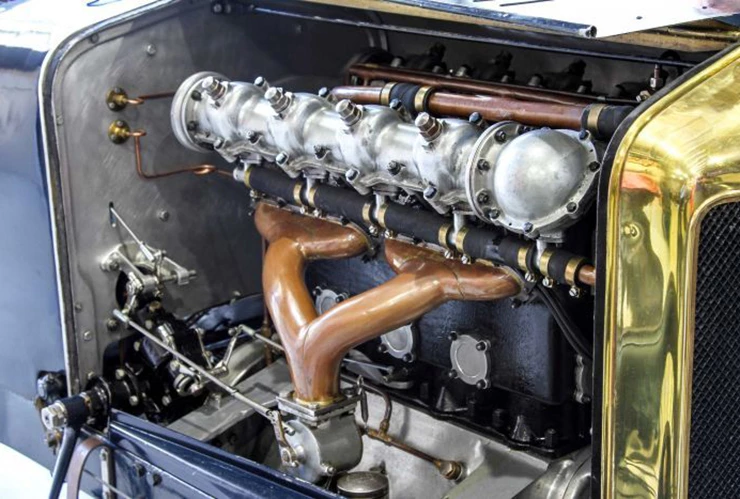
The first step in the digital reproduction of the vintage car’s engine was to 3D scan both it’s exterior and interior using a laser scanner and stylus probe. To achieve this, Guilfoyle reached out to a local company specializing in 3D scanning, which captured a detailed scan of the automotive part and generated a CAD model of it.
For the best results, the original engine was disassembled and thoroughly cleaned before the scanning process. When complete, the scans were digitally assembled and repaired. Additional material was also added to the CAD model to be machined in the final stage of production.
The 3D model of the Delage Type-S vehicle also underwent analysis and extensive simulation testing to ensure certain properties and flow characteristics.
Multi-step production
With the 3D model of the vintage car’s engine, a digital sand mold model was created. After a trial run and some slight modifications to the design, a full-size sand mold was 3D printed using a Voxeljet VX1000 sand printer. Though still, a niche part of the larger additive manufacturing industry and printers are a great way to affordably and time-efficiently construct molds and cores for metal casting. In this case, the technology proved useful for producing a one-off component for the automotive restoration project.
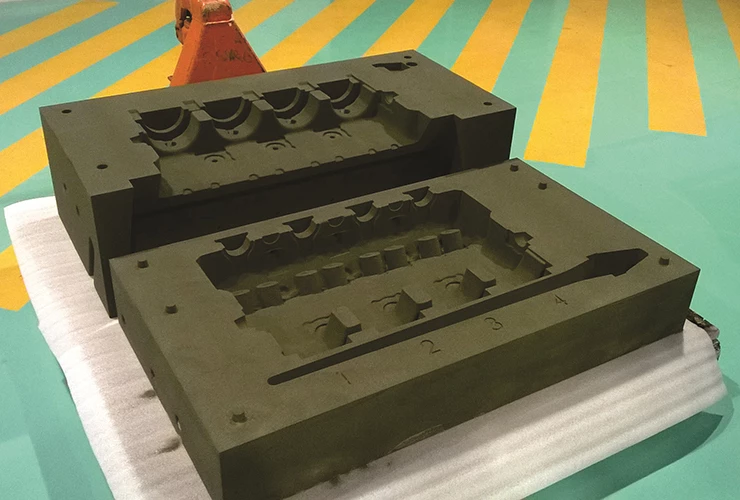
The 3D printed sand mold for the engine, made from silica sand and a furane resin binder, consisted of 14 parts and cores, which were 3D printed in two sets. Once the molds were post-processed and sealed, a local iron foundry was employed to cast the engine block. When the cast was complete and the sand mold was broken off, the resulting engine part was cleaned and inspected before being CNC machined to meet the original engine’s exact specifications.
Delage Type-S rides again
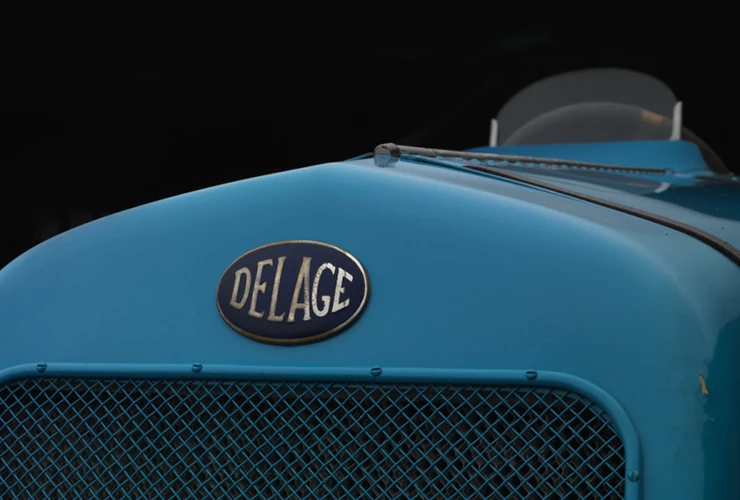
In 2017, it was reported that the last remaining Delage Type-S had successfully been fitted with its new digitally manufactured engine and was once again functional. The car, which at one point was thought to become a static museum relic, can today still be driven on the open road like it was built to be.
Today, we can look back at Guilfoyle’s innovative restoration project and acknowledge how it signaled a change in the automotive restoration landscape. It was, after all, one of the first big automotive restoration undertakings which utilized 3D scanning, 3D printing, casting and machining to reproduce a replica of a vintage part. The overall success of the project showcased the viability of using 3D scanning and 3D printing to reverse engineer rare or vintage automotive parts and paved the way for other impressive restoration projects.
As new manufacturing technologies become increasingly common for automotive restoration jobs (and automotive production more generally), advanced manufacturing and rapid prototyping services, like RapidDirect, are ideal resources for producing one-off spare or replacement parts for vehicles.
Share on social media...
Tags
Popular Topics
1
Understanding Plastic Fabrication Processes: A Complete Guide
Ayotomiwa Omotosho13 Feb
2
Ceramic CNC Machining: Another Option for Custom Manufacturing
Oluwafemi Adedeji13 Feb
3
The Overmolding Design Guide You Must Never Forget
Oluwafemi Adedeji13 Feb
4
What You Need to Know About the Overmolding Process
Paul Richard05 Feb

